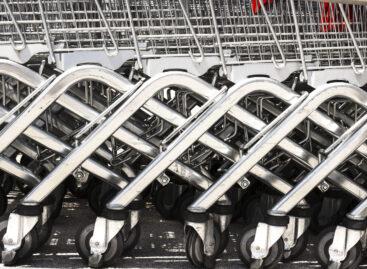PwC Magyarország publishes the list of top-grossing online FMCG players
From 2015 GKID used to publish the annual rankings of the top-grossing online retailers on the Hungarian market. Following the company’s acquisition last year, the list is now compiled by PwC Magyarország – with the same concept.
This article is available for reading in Trade magazin 2025/10.

Guest writer:
Norbert Madar
lead manager
PwC Magyarország
In 2024 the value of the Hungarian online FMCG market reached HUF 245.3bn in gross sales, representing a 24% growth from the previous year. The food segment accounted for gross sales of HUF 165.2bn (up 28.8%), and drugs and household goods represented a value of HUF 42.4bn (a 16.4% hike). 34% of Hungarian internet users – approximately 1.7 million people – purchase FMCG products online.
The top of the list
In 2024 Alza.hu took first place in the e-tail top list, which ranks all kinds of retailers, taking over from the previous market leader, eMAG. Both companies sell FMCG products, even if this is not their main profile. Kifli.hu also ranked second in this combined list, but they have been leading the ranking of FMCG retailers for years. Kifli’s success lies in its fast, even same-day delivery, high service standards and innovations that increase purchase frequency. Rossmann moved up to third place in the FMCG rankings in 2024. The FMCG ranking has 12 retailers, including newcomers Petissimo and Fressnapf in the pet food category.
A shrinking market
In 2024 the number of orders fulfilled reached 7.1 million, a new record for the segment. Market polarisation continued in last year: while some players are growing rapidly, others are stagnating or showing declining sales. The average annual growth of companies achieving expansion in the FMCG sector is 25%, but Wolt Market’s turnover grew well above 50%. Combined turnover of the 15 largest online retailers with local operations amounted to HUF 463.1bn in 2024, representing a 12.4% surge compared to 2023. Those shoppers who have tried and use online services are typically satisfied with them, with ratings of 4 or above on a scale of 5. Currently the greatest potential lies in increasing the frequency of purchases, with Kifli.hu leading the way with an average of 14 purchases per year, followed by Tesco with 9.3 and Auchan with 4.7.
Foreign retailers also made their mark
In spite of the growth on the FMCG market, centralisation and polarisation are making it harder for smaller players to stay in the game. According to recent news Temu, which has already disrupted other categories, is considering entering the FMCG category, first on the German market, with the involvement of local partners. This move could considerably disrupt the online FMCG market. In addition to posing competition to existing players, it could also create an opportunity: just as it has brought 300,000 new customers to the Hungarian market so far, Temu could increase the number of online FMCG product buyers and their purchase frequency.
What is necessary to stay in the game?
The biggest challenge for the online FMCG sector is the unfavourable domestic macroeconomic environment. Lastingly high food inflation, no real wage growth and the re-emerging threat of unemployment are all factors that collectively hold back retail spending growth. However, the conquest of online channels can only happen through increased spending, as the online and physical store channels continue to operate side by side, rather than exclusively, particularly in the case of food purchases. If there is no major improvement in purchasing power, this will definitely hinder the further development and expansion of the online FMCG sector in the short term. Technological developments, improvements in customer experience, new services and the emergence of international competitors will shape the future of the industry.
Related news
Record-breaking Black Friday in online orders
🎧 Hallgasd a cikket: Lejátszás Szünet Folytatás Leállítás Nyelv: Auto…
Read more >We took you on a flight! (Part 2)
🎧 Hallgasd a cikket: Lejátszás Szünet Folytatás Leállítás Nyelv: Auto…
Read more >AI Readiness Index 2025: we are more prepared now
🎧 Hallgasd a cikket: Lejátszás Szünet Folytatás Leállítás Nyelv: Auto…
Read more >Related news
Christmas shock in commerce: for the first time, we can pay with bank cards in fewer places
🎧 Hallgasd a cikket: Lejátszás Szünet Folytatás Leállítás Nyelv: Auto…
Read more >Hungarian Confectionery Manufacturers Association: trends in 2025 and prospects for 2026
🎧 Hallgasd a cikket: Lejátszás Szünet Folytatás Leállítás Nyelv: Auto…
Read more >Most grocery chains will be open until noon on December 24th
🎧 Hallgasd a cikket: Lejátszás Szünet Folytatás Leállítás Nyelv: Auto…
Read more >






